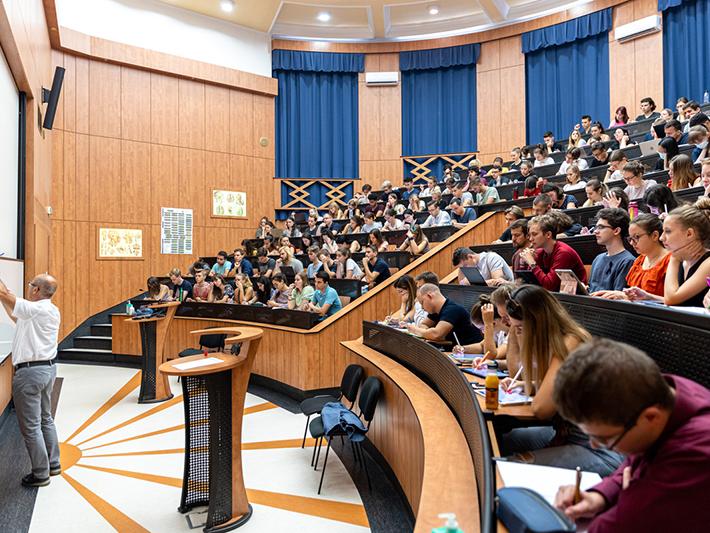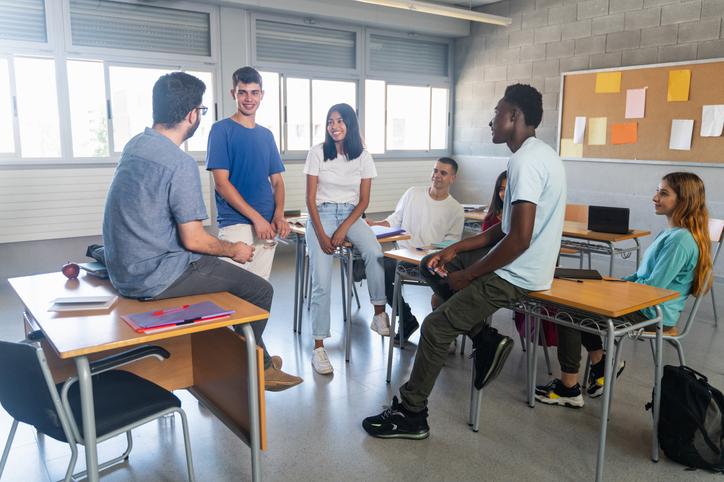As the new academic year approaches, one common challenge facing all of us who teach is the identification and implementation of effective teaching development strategies. We all want to improve our teaching methods, but with an overwhelming number of workshops, articles and ideas, knowing where to start can be daunting. After more than a decade of experience in assisting academic staff to develop their teaching skills, I’ve gained invaluable insights into what works and what doesn’t. In this resource, I’ve narrowed down four time-honoured strategies that you can use right now to improve your teaching.
1. Participate in some formal training, then apply what you’ve learned
Every day we are faced with teaching challenges: lack of engagement, students not submitting assignments properly, chatter in the classroom, cheating, etc. Try making a brief note at the end of each week of those you are facing at any particular time and then visit your institution’s teaching and learning centre and sign up for training. Create a new strategy based on one thing you learn and try it out in the classroom. Get feedback from students afterwards in an anonymous survey to gauge the success of your new strategy. This way, you can make the most of your learning and improve your teaching at the same time.
2. Watch someone else teach, then try something they do in your class
The “observe, do with assistance, do alone” method of teaching is popular in many different disciplines. This model works best when a discrete skill is being taught that fits into the larger set of skills needed to perform a job. Teaching is no different. Pick a colleague in your department or outside and observe them teaching. Note one or two new strategies that stand out to you and have them give you guidance on how to implement these techniques if they’re really new to you. Then, try them out in your own class. Gauge your students’ reactions by noting how they respond to your new strategy. If they are engaged and enjoying the class, you’ve picked a winner!
- Resource collection: Teaching strategies to enhance learning
- We are not alone: using participatory group activities to engage students in sustainability
- How can we teach AI literacy skills?
3. Read, listen or watch something about teaching, then have a discussion about it with another teacher
Expose yourself to new ideas, philosophies and concepts in teaching by reading something, watching videos or listening to a podcast. Take a few days to digest what you’ve learned, then set up a time to discuss what you learned with another educator or someone in your faculty. Explain what you have learned, how you might integrate this into your teaching and what impact you predict it will have. By thinking about new teaching ideas and then discussing them with someone else, you will make meaning of what you’ve learned through reflection and social interaction: two things that brains love. To get you started, here are some podcasts and books:
- The Cult of Pedagogy blog, by Jennifer Gonzalez
- Small Teaching Online: Applying Learning Science in Online Classes, by Flower Darby and James M. Lang
- How Learning Works: Seven Research-Based Principles for Smart Teaching, by Susan A. Ambrose.
If you need someone with whom to make meaning of these new concepts, your institutional teaching and learning centre should be staffed with folks who would love to meet with you to discuss teaching.
4. Record yourself teaching, then watch it to pinpoint one thing to work on
Watching yourself on camera can be uncomfortable, but it’s a great way to easily spot areas for improvement. For example, you might notice that you talk to the whiteboard when writing and talking at the same time. You might choose this one action to purposefully avoid in your next class. You might notice that when you ask a question to the class, you then immediately answer the question without giving students time to process what you’ve said, so might choose to add some “wait time” into your question asking. As you’re watching your video, note down three to four points during which you felt the learning opportunities weren’t optimal, or that what you intended to happen didn’t. Then, choose one issue and make an intentional mental note to rectify it. Gradually, these small adjustments will become habits and improve your teaching.
In my experience, improving teaching is not an overnight process. It is not the result of a single training session, nor does it involve completely abandoning your current methods in favour of the latest teaching trends. Instead, it is a gradual process of reflection, adjustments and fine-tuning. The four tips provided in this piece are your starting point in this journey. Moving forward, as teaching trends and technologies evolve, using these methods can keep your teaching practice up to date.
Rebecca Wakelin is a professor at Xi’an Jiaotong-Liverpool University.
If you would like advice and insight from academics and university staff delivered direct to your inbox each week, sign up for the Campus newsletter.




comment